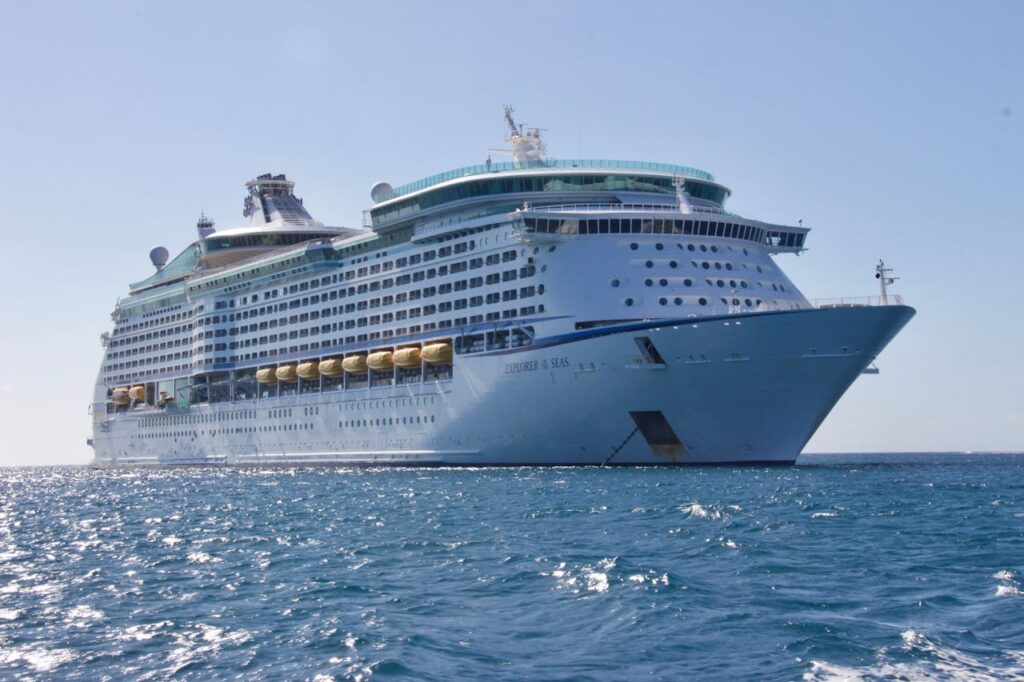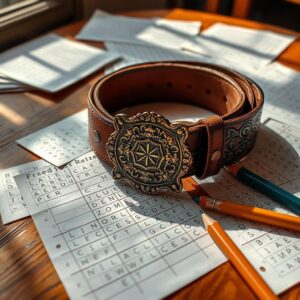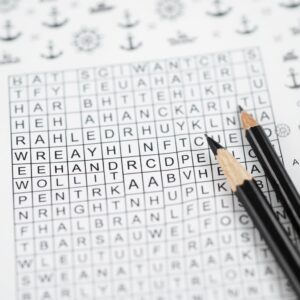The vast oceans have witnessed the rise and fall of countless ships, each with its own story to tell—be it of adventure, battle, discovery, or mystery. From the galleons that charted new territories to the warships that dominated naval battles, and from the luxury liners of the Golden Age to the mythical vessels that live in our imaginations, these ships have left an indelible mark on history and culture. In this article, we explore 50 of the most iconic vessels ever to sail the seas, their stories, and their legacies. And, to test your knowledge of these famous ships, we’ve created a crossword puzzle at the end!
1. Pioneers of Exploration: The Ships that Charted the Unknown
From the days of Christopher Columbus to Captain Cook, certain ships have become synonymous with the age of exploration. These vessels dared to cross uncharted waters, mapping new territories and laying the foundation for the interconnected world we know today.
Santa Maria
The Santa Maria was the flagship of Christopher Columbus during his first voyage to the New World in 1492. Although it was a relatively small carrack, this ship’s voyage changed the course of history by opening up the Americas to European exploration and colonization. Despite being wrecked off the coast of present-day Haiti, the Santa Maria’s name is forever tied to one of the most significant discoveries of the modern age.Endeavour
Captain James Cook’s ship, the Endeavour, is renowned for its role in scientific exploration and navigation. Launched in 1764, it made its most famous journey to the Pacific Ocean in 1768, where Cook charted the coastlines of New Zealand and Australia. The ship’s scientific crew, including botanist Joseph Banks, made groundbreaking discoveries that would shape future natural sciences.Mayflower
The Mayflower carried the Pilgrims from England to the New World in 1620, leading to the establishment of Plymouth Colony in what is now Massachusetts. This humble merchant ship became a symbol of hope and determination, representing the quest for religious freedom and new beginnings in a foreign land.Golden Hind
Sir Francis Drake’s Golden Hind sailed around the world from 1577 to 1580, becoming only the second vessel in history to achieve this feat. Drake’s circumnavigation brought immense wealth to England through piracy and plunder, strengthening the country’s naval power and contributing to its maritime dominance.Kon-Tiki
Unlike other explorers, Thor Heyerdahl sought to prove ancient migration theories with his raft, the Kon-Tiki. In 1947, he sailed from South America to the Polynesian islands, demonstrating that such voyages could have occurred prehistorically. The Kon-Tiki’s journey remains a testament to human courage and ingenuity.
2. The Glory of War: Famous Warships and Battleships
Across centuries, warships have dominated the seas, securing victories and suffering defeats that have altered the course of history. Each warship tells a tale of combat, strategy, and sacrifice, often becoming a national symbol.
HMS Victory
Launched in 1765, HMS Victory became legendary as the flagship of Admiral Horatio Nelson during the Battle of Trafalgar in 1805. This ship’s involvement in one of history’s most decisive naval battles cemented Britain’s naval supremacy for over a century. Today, it remains a museum in Portsmouth, England, a proud symbol of Britain’s maritime heritage.USS Constitution
Affectionately known as “Old Ironsides,” the USS Constitution was launched in 1797 and became a key player in the War of 1812 against Britain. Its victories in battle, due to its resilient oak hull, earned it a special place in American hearts. As the world’s oldest commissioned warship still afloat, it continues to serve as a symbol of the U.S. Navy’s enduring strength.Bismarck
The German battleship Bismarck was one of the most powerful and feared warships of World War II. Its brief but dramatic career included the sinking of the British battlecruiser HMS Hood. However, the Bismarck met its own end in a fierce battle with the British Royal Navy, cementing its place in naval history.HMS Hood
As the pride of the Royal Navy, the HMS Hood was the largest and most powerful warship of its time. Tragically, it was lost during a battle with the Bismarck in 1941, a blow that shook Britain and prompted a relentless hunt for the German battleship.USS Arizona
The USS Arizona remains one of the most powerful symbols of World War II in America. It was tragically destroyed during the Japanese attack on Pearl Harbor in 1941, taking over a thousand American lives with it. The wreck remains a memorial, a somber reminder of the costs of war and a call for peace.Yamato
Japan’s Yamato was the largest battleship ever constructed, representing the might and ambition of the Japanese navy during World War II. It was sunk in 1945 during a suicide mission in the Battle of Okinawa, marking the end of Japan’s naval dominance.USS Enterprise (CV-6)
The USS Enterprise was a crucial aircraft carrier in the Pacific Theater during World War II. Nicknamed “The Grey Ghost,” it played a pivotal role in many key battles, including Midway, and earned more battle stars than any other U.S. warship in history.
3. Icons of Tragedy: Ships Lost to the Deep
Some ships are remembered not for their victories or discoveries, but for the tragic stories of their demise. These vessels, now resting at the ocean floor, have become legends of loss and mystery.
Titanic
The “unsinkable” Titanic met its fate on its maiden voyage in 1912 after colliding with an iceberg. More than 1,500 passengers perished, making it the deadliest peacetime maritime disaster. The sinking of the Titanic led to significant changes in maritime safety regulations.Lusitania
The Lusitania, a British passenger liner, was sunk by a German U-boat in 1915, killing nearly 1,200 people. This event played a crucial role in turning American public opinion against Germany and contributed to the U.S. entering World War I.Britannic
Sister ship to the Titanic, the Britannic served as a hospital ship during World War I. It sank after hitting a mine in the Aegean Sea in 1916, though most on board survived. The Britannic’s wreck was discovered in 1975 and remains a site of intrigue and study.Andrea Doria
The luxurious Italian ocean liner Andrea Doria sank in 1956 after colliding with the Swedish liner Stockholm. Its sinking is often remembered for the dramatic rescue of its passengers and the controversy surrounding the collision.SS Edmund Fitzgerald
The SS Edmund Fitzgerald was an American Great Lakes freighter that sank in a sudden storm in 1975. The mystery surrounding its sinking and the haunting ballad “The Wreck of the Edmund Fitzgerald” by Gordon Lightfoot have kept its story alive in public memory.Vasa
The Vasa was a Swedish warship that sank on its maiden voyage in 1628 due to design flaws. It was salvaged in the 20th century and is now a museum in Stockholm, offering a unique glimpse into the naval architecture and ambitions of the 17th century.
4. Vessels of Innovation: Technological Marvels on Water
Some ships have pushed the boundaries of naval engineering, forever changing the way we build and navigate vessels. These innovations helped shape the future of maritime travel, warfare, and exploration.
USS Monitor
The USS Monitor was the Union’s first ironclad warship, constructed during the American Civil War. It represented a radical departure from traditional wooden ships, with its revolving turret and iron armor, changing naval warfare forever.HMS Dreadnought
Launched in 1906, the HMS Dreadnought revolutionized naval design with its “all-big-gun” armament and steam turbine propulsion, making all other battleships obsolete overnight. Its influence was so profound that all subsequent battleships became known as “dreadnoughts.”SS Great Eastern
Designed by the brilliant engineer Isambard Kingdom Brunel, the SS Great Eastern was the largest ship of its time. Launched in 1858, it was built to carry passengers across the Atlantic and later laid the first successful transatlantic telegraph cable, linking continents in communication.USS Nautilus
The USS Nautilus was the world’s first nuclear-powered submarine, launched in 1954. It demonstrated the incredible range and endurance made possible by nuclear propulsion, leading to a new era of submarine warfare and exploration, including the first-ever under-ice transit of the North Pole in 1958.
5. Cruising in Style: Legendary Ocean Liners of the Golden Age
In the early 20th century, ocean liners were the epitome of luxury, transporting the wealthy and famous across the seas. These vessels represented the height of engineering, comfort, and style.
- Queen Mary
The Queen Mary was one of the grandest ocean liners ever built, serving both as a luxury cruise ship and a World War II troopship. Now docked as a floating hotel in Long Beach, California, it remains an iconic symbol of the glamour and elegance of the 1930s and 1940s.



















